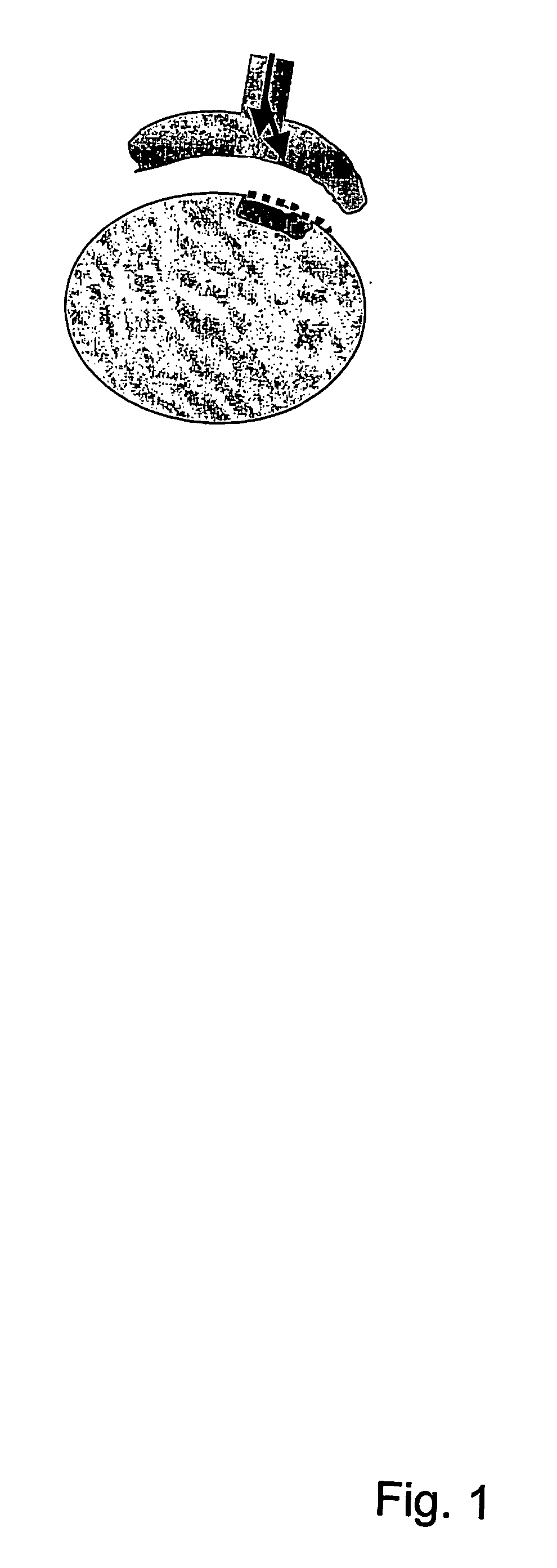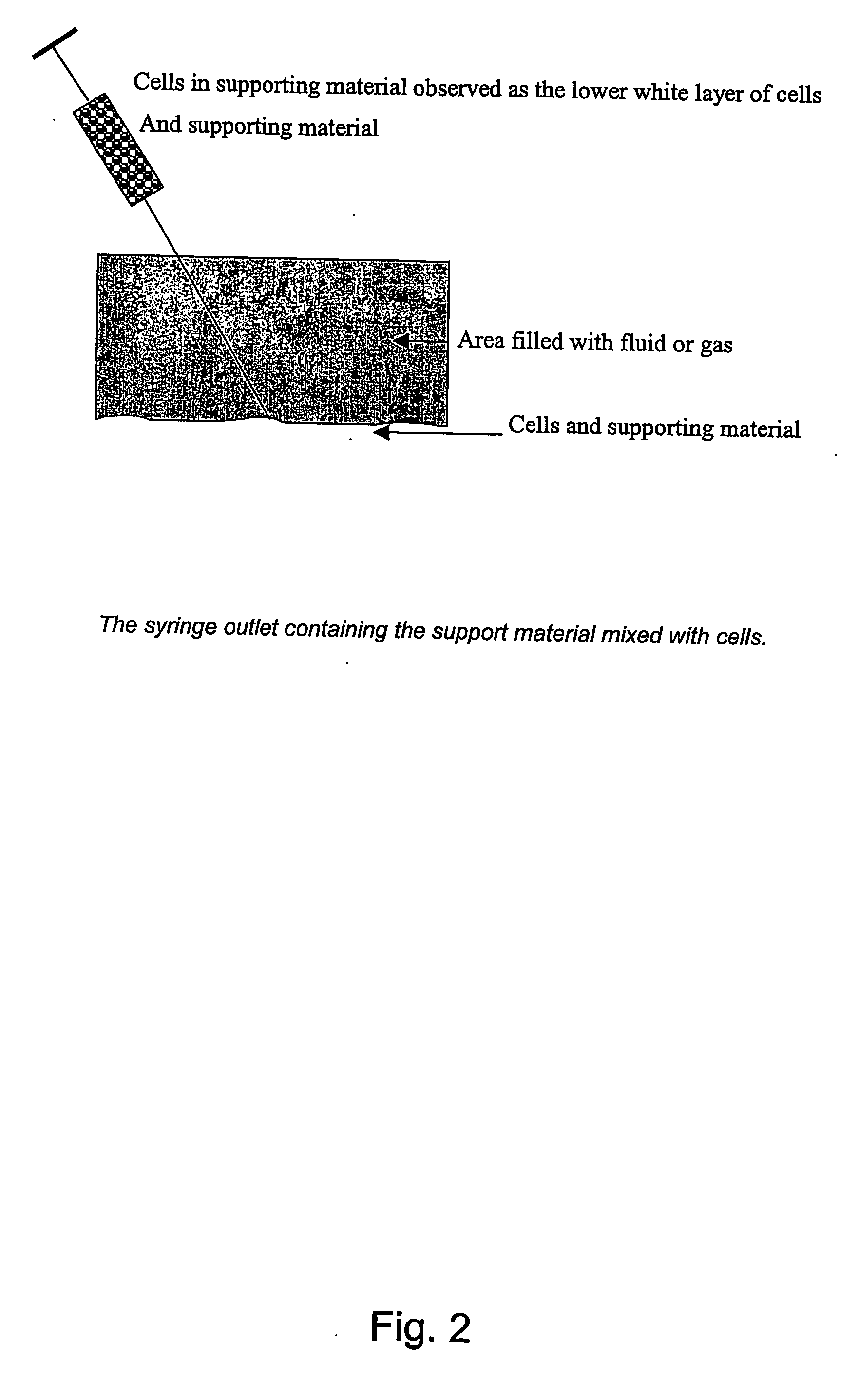Method for cell implantation
a cell implantation and transplantation technology, applied in the direction of skeletal/connective tissue cells, biocide, plant growth regulators, etc., can solve the problems of inferior quality of repair tissue, inability to use as a scaffold, and tisseel® not improving the repair of osteochondral defects
- Summary
- Abstract
- Description
- Claims
- Application Information
AI Technical Summary
Benefits of technology
Problems solved by technology
Method used
Image
Examples
example 1
[0101] A joint derived from an animal, such as for instance a knee joint from a pig or a horse or other animals are subjected to arthroscopy and fluid such as 0.9% sterile saline or a gas is filling up the joint to visualize the area targeted for the arthroscopic repair of the area as for instance a cartilage defect in order to enable the application of the supporting material mixed with the cells in such a manner that the cell / supporting material does not mix with the fluid or gas applied via the arthroscope, and with a retained capability to adhere to the target area.
[0102] Alternatively, the cells and or the cells mixed or grown in a hydroxy-apatite suspension (e.g., Bio-Oss), may be delivered through the syringe, and be mixed at the outlet of the syringe into the area to be treated.
example 2
[0103] In this example, the support material may be placed—under pressure from the other liquid, prior to the implantation of the cells. In this case, the supporting material may be placed below the other liquid for instance kept in place by the pressure exerted via the arthroscope until solidification. The cells are then injected at any time after the placement of the liquid substance or after the solidification has occurred, by simply injecting the cells into the supporting material kept in place by the fluid pressure.
example 3
Arthroscopic Autologous Chondrocyte Implantation, Pre-clinical, Combined with Second Fibrin Sealant
First Surgical Arthroscopic Intervention
[0104] Five goats are used for the pre-clinical trial. The goats are subjected to two (2) surgical interventions. The first surgical intervention is an arthroscopic harvest of cartilage biopsy from the knee of the goats. The goats are kept at an approved animal facility at Aalborg Sygehus Syd, Denmark. Following anaesthesia, arthroscopy is performed by either a antero-medial or antero-lateral entrance through a small incision. Two additional incisions are prepared on the medial and the lateral side of the knee. Using an elevator, a 50-200 mg cartilage is removed by a sharp elevator, and aseptically transferred to a Transport tube containing sterile Dulbecco MEM / F12 and fetal calf serum. Using a punching instrument, a 0.6 cm (diameter) circular full thickness cartilage lesion is made, to be used for the implantation of cells 3-5 weeks later. T...
PUM
| Property | Measurement | Unit |
|---|---|---|
| pressure | aaaaa | aaaaa |
| thickness | aaaaa | aaaaa |
| diameter | aaaaa | aaaaa |
Abstract
Description
Claims
Application Information
 Login to View More
Login to View More - R&D
- Intellectual Property
- Life Sciences
- Materials
- Tech Scout
- Unparalleled Data Quality
- Higher Quality Content
- 60% Fewer Hallucinations
Browse by: Latest US Patents, China's latest patents, Technical Efficacy Thesaurus, Application Domain, Technology Topic, Popular Technical Reports.
© 2025 PatSnap. All rights reserved.Legal|Privacy policy|Modern Slavery Act Transparency Statement|Sitemap|About US| Contact US: help@patsnap.com


